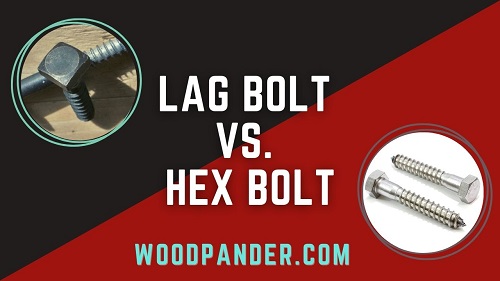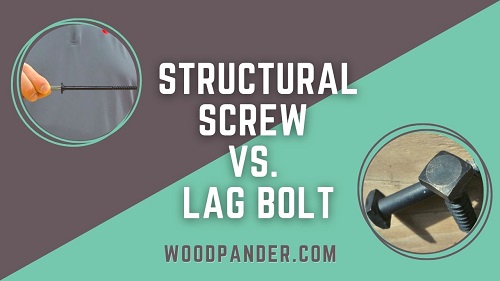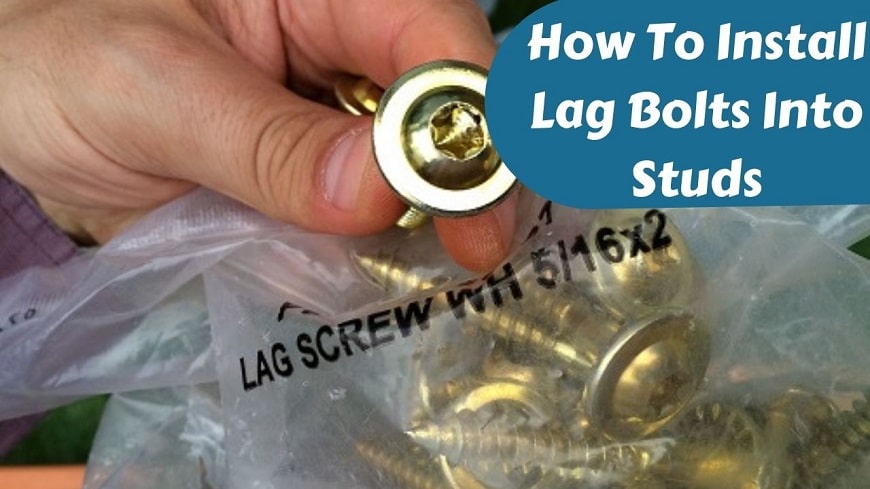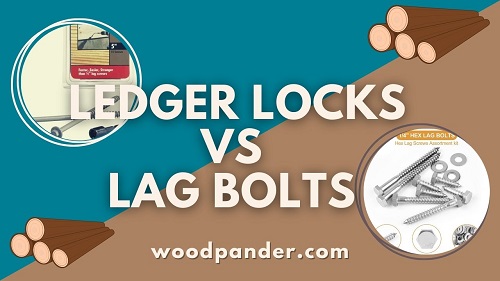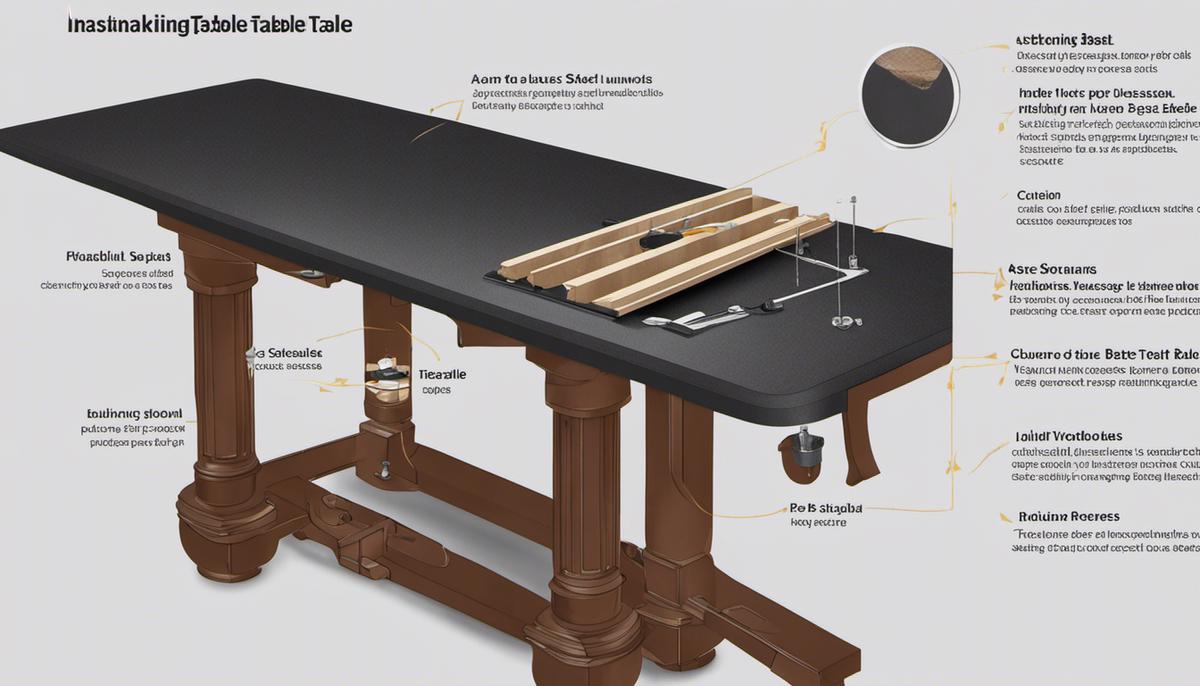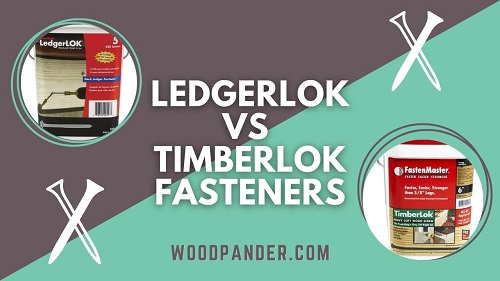Lag bolts and carriage bolts are two common types of fasteners used in construction and woodworking. While both serve similar purposes, there are key differences between them.
Lag bolts have a threaded shaft and a hexagonal head, while carriage bolts have a smooth, round head and a square neck. Understanding these differences is crucial when choosing the right bolt for your project.
- Lag Bolt vs Carriage Bolt – A Comparison Table
- Lag Bolt vs Carriage Bolt Detail Comparison
- Head Styles and Designs
- Material Composition and Varieties
- Installation Process and Techniques
- Strength and Load-Bearing Capacities
- Resistance to Corrosion and Rust
- Cost Considerations
- Advantages of Lag Bolts
- Advantages of Carriage Bolts
- Limitations and Drawbacks
- Are Lag Bolts Strong?
- How Much Weight Can a Carriage Bolt Hold?
- Are Carriage Bolts Better Than Lag Bolts?
- Which One Is Better? Lag Bolt vs Carriage Bolt
- Common Mistakes For Lag Bolts and Carriage Bolts
- Alternatives to Carriage and Lag Bolts
- Related Questions
Lag Bolt vs Carriage Bolt – A Comparison Table
| Aspect | Lag Bolt | Carriage Bolt |
|---|---|---|
| Design | Threaded screw with a pointed tip | Smooth, rounded head with a square neck |
| Purpose | Used for heavy-duty applications | Ideal for wood-to-wood connections |
| Installation | Requires pre-drilled pilot hole | Requires pre-drilled hole |
| Holding Strength | High due to coarse threading | Moderate due to smoother threading |
| Head Type | Hex or square head | Round, domed head with a square neck |
| Usage | Outdoor construction, timber framing | Woodworking, fastening wood components |
| Removal | Can be challenging due to threading | Easier removal due to smooth shank |
| Material Options | Steel, stainless steel, galvanized | Steel, stainless steel, galvanized |
| Common Sizes | Various lengths and diameters available | Various lengths and diameters available |
| Fastening Surface | Suitable for hard materials like lumber | Ideal for softer materials like wood |
One Of Our article : Ledger Locks Vs. Lag Bolts

Overview Of Lag Bolts
Lag bolts, also known as lag screws, are heavy-duty fasteners commonly used in construction and woodworking projects.
They are characterized by their threaded shaft and hexagonal head, which allows for easy installation using a wrench or socket. Lag bolts are often used to secure heavy materials, such as beams and posts, to provide strong and durable connections.
They come in various types and variations, including different lengths, diameters, and thread patterns, to accommodate different applications and load requirements. Lag bolts are a popular choice for projects that require high strength and stability.
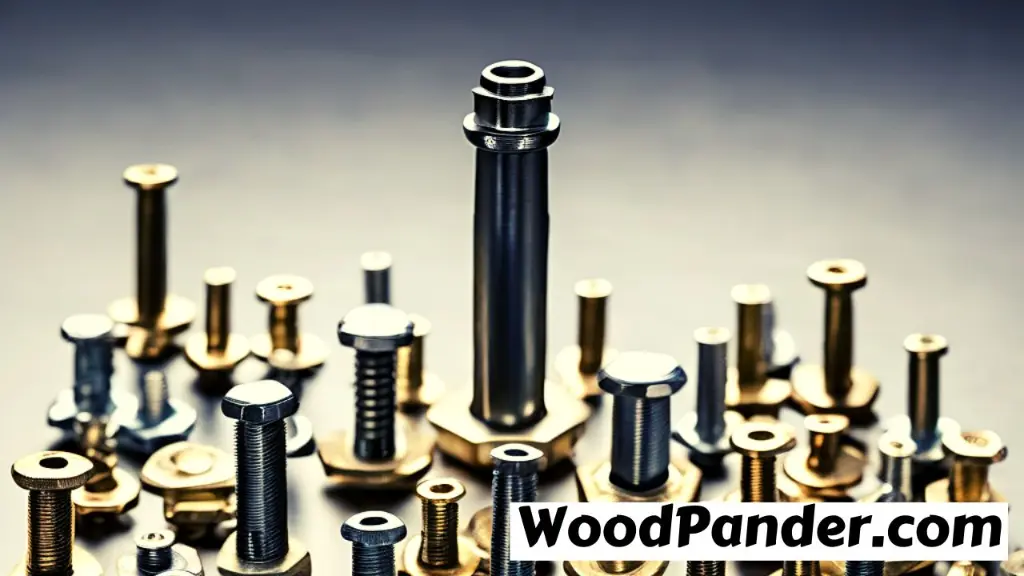
Overview Of Carriage Bolts
Carriage bolts, also known as coach bolts, are versatile fasteners commonly used in construction, woodworking, and other industries.
They are characterized by their smooth, dome-shaped head and square neck, which prevents the bolt from spinning during installation.
Carriage bolts are often used to secure wood to wood or metal to wood connections, such as in furniture assembly, fence construction, and automotive applications.
They come in various sizes and materials, including stainless steel and galvanized steel, to suit different project requirements. Carriage bolts offer a secure and aesthetically pleasing fastening solution.
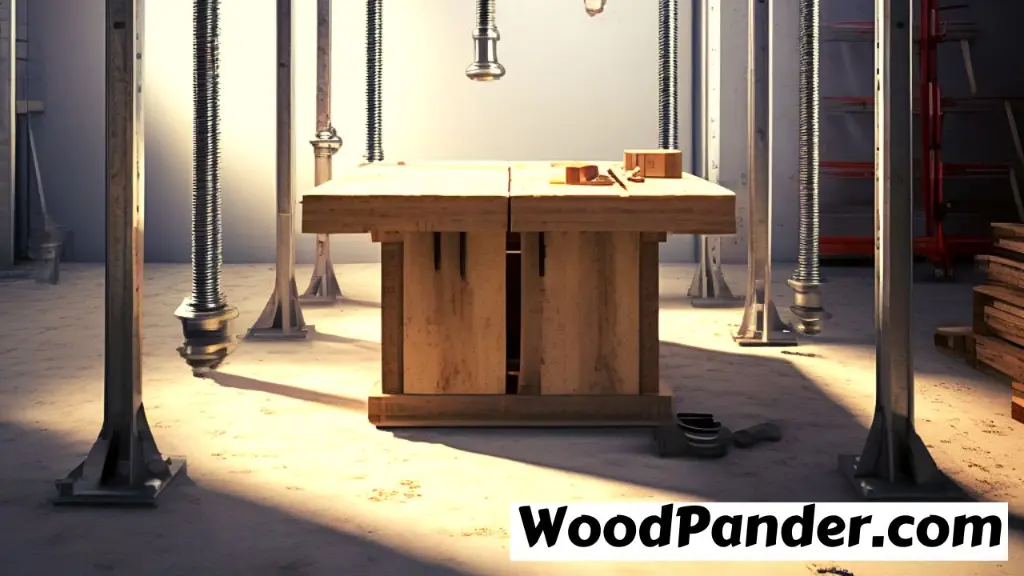
What Is a Lag Bolt Used For?
A lag bolt, also known as a lag screw, is a heavy-duty fastener commonly used in construction and woodworking projects. It features a coarse, threaded shaft and a hexagonal or square head.
Lag bolts are primarily used for their exceptional strength and load-bearing capacity. They are ideal for securing heavy materials, such as beams, posts, and large pieces of lumber.
Lag bolts are commonly used in deck construction, timber framing, and structural applications where a strong and durable connection is required. With their ability to provide a secure and long-lasting hold, lag bolts are an essential component in many construction projects.
What Is a Carriage Bolt Used For?
Carriage bolts, also known as coach bolts, are versatile fasteners commonly used in various applications.
They feature a smooth, cylindrical shaft with a square or round head and a threaded portion beneath the head. Carriage bolts are primarily used for their secure and tamper-resistant connection.
They are often used in woodworking projects, such as furniture assembly and framing, as well as in construction projects for attaching metal brackets and hinges.
Carriage bolts are also commonly used in outdoor structures like decks and fences, where their smooth heads provide a finished appearance. With their unique design and functionality, carriage bolts are an essential component in many projects.
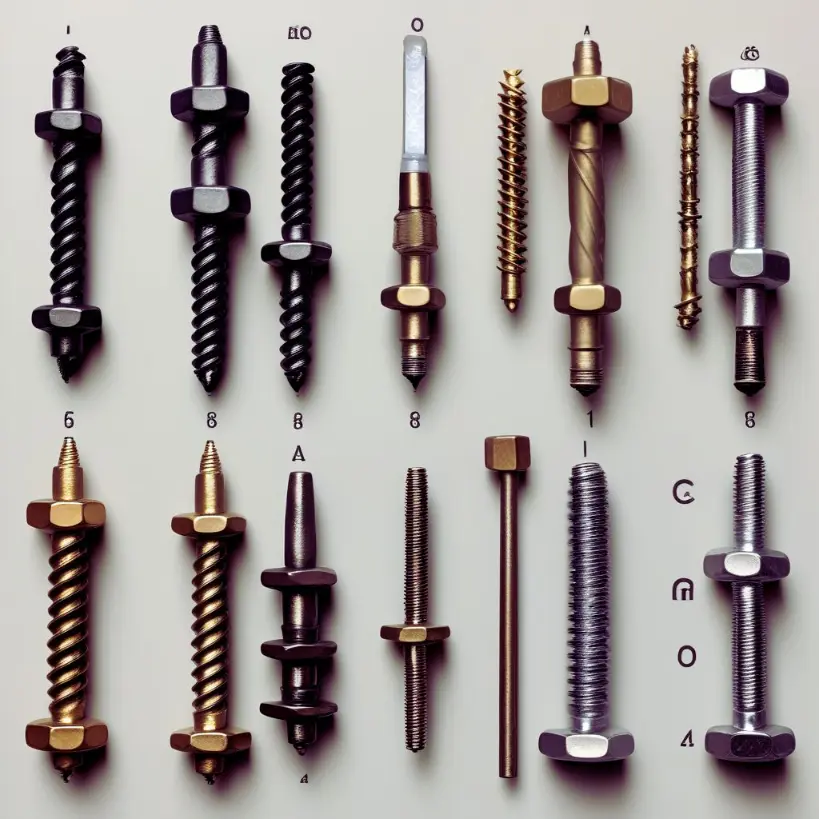
Lag Bolt vs Carriage Bolt Detail Comparison
Lag bolts vs carriage bolts have distinct differences in their design and functionality. A detailed comparison between these two types of bolts will help you understand their strengths and weaknesses.
By examining factors such as head styles, material composition, installation process, and load-bearing capacities, you can determine which bolt is better suited for your specific project needs.
Head Styles and Designs
When it comes to lag bolts and carriage bolts, the head styles and designs play a crucial role in their functionality and application.
Lag bolts come in various head styles, including hex head, square head, and round head. The hex head style is the most common and provides a secure grip for wrenches or sockets, making it easier to tighten or loosen the bolt.
The square head style offers a similar advantage, providing a larger surface area for gripping. On the other hand, the round head style is more aesthetically pleasing and often used in decorative applications.
Carriage bolts feature unique head designs that set them apart from lag bolts. The most distinctive feature of a carriage bolt is its rounded, domed head with a square shoulder beneath it.
This design prevents the bolt from turning when tightened, making it ideal for applications where a smooth, finished appearance is desired. The square shoulder also provides a secure grip, ensuring the bolt remains in place.
When comparing head styles, it’s important to consider their impact on applications. Lag bolts with hex or square heads are commonly used in construction projects, such as framing or attaching heavy-duty materials.
The larger surface area of these head styles allows for greater torque and prevents stripping. Carriage bolts, with their rounded heads, are often used in applications where aesthetics are important, such as furniture assembly or exterior structures.
In summary, the head styles and designs of lag bolts and carriage bolts have a significant impact on their functionality and application. Whether you need a secure grip for heavy-duty projects or a visually appealing finish, understanding the different head styles will help you choose the right bolt for your specific needs.
Material Composition and Varieties
Lag bolts are commonly made from materials such as steel, stainless steel, and galvanized steel. These materials offer excellent strength and durability, making lag bolts suitable for heavy-duty applications.
Carriage bolts are typically manufactured from steel, stainless steel, and brass. Steel carriage bolts provide strength and corrosion resistance, while stainless steel carriage bolts offer superior rust resistance. Brass carriage bolts are often used in decorative applications due to their attractive appearance.
When choosing between lag bolts and carriage bolts, it’s important to consider the material composition and its suitability for different environments. Steel and stainless steel bolts are ideal for outdoor applications where exposure to moisture and corrosion is a concern. Galvanized steel and brass bolts are better suited for indoor applications or areas with minimal exposure to moisture.
Installation Process and Techniques
Installing lag bolts and carriage bolts require different steps and techniques.
When installing lag bolts, start by drilling a pilot hole slightly smaller than the diameter of the bolt. Then, use a wrench or socket to drive the lag bolt into the hole until it is securely tightened. It’s important to ensure that the bolt is flush with the surface and not over-tightened to avoid damaging the material.
On the other hand, installing carriage bolts involves drilling a hole through the material and inserting the bolt from one side. Secure the bolt with a washer and nut on the opposite side, and tighten until snug. This method allows for easy removal and adjustment if needed.
The installation process for lag bolts is simpler and quicker, while carriage bolts offer more flexibility for adjustments and disassembly. Consider the specific requirements of your project to determine which installation method is more suitable.
Strength and Load-Bearing Capacities
Lag bolts and carriage bolts have different load-bearing capabilities. Lag bolts are known for their high strength and are suitable for heavy-duty applications.
Carriage bolts, on the other hand, have a lower load-bearing capacity but offer better resistance to shear forces. The choice between the two depends on the specific load requirements of your project.
Resistance to Corrosion and Rust
Lag bolts and carriage bolts differ in their resistance to corrosion and rust.
Lag bolts are typically made of carbon steel, which is susceptible to rust if not properly coated or treated.
Carriage bolts, on the other hand, are often made of stainless steel or galvanized steel, which offer better resistance to corrosion.
Factors such as exposure to moisture, chemicals, and environmental conditions can affect the corrosion resistance of both types of bolts. Understanding these factors and the comparative durability of lag bolts and carriage bolts is crucial in selecting the right bolt for your project.
Cost Considerations
When it comes to cost, both lag bolts and carriage bolts have their own considerations.
Lag bolts are generally more affordable compared to carriage bolts. They are widely available and come in various sizes, making them a cost-effective option for many projects.
On the other hand, carriage bolts tend to be slightly more expensive due to their specialized design and materials, such as stainless steel or galvanized steel.
When considering cost-effectiveness for long-term projects, it’s important to factor in the durability and lifespan of the bolts. While lag bolts may be cheaper upfront, carriage bolts’ resistance to corrosion and rust can make them a more cost-effective choice in the long run.
By carefully assessing your project’s requirements and budget, you can make an informed decision on which bolt type offers the best cost considerations for your specific needs.
Advantages of Lag Bolts
Lag bolts offer exceptional strength and durability, making them ideal for heavy-duty applications. Their coarse threads provide excellent grip and prevent loosening over time, ensuring a secure and long-lasting connection.
Lag bolts are particularly well-suited for wood-to-wood connections, such as framing, decking, and furniture assembly. Their sharp points and self-drilling capabilities make installation easier and faster.
Whether you’re constructing a deck or building furniture, lag bolts provide the strength and reliability needed for a wide range of projects.
Advantages of Carriage Bolts
Carriage bolts offer unique advantages and specific benefits that make them a preferred choice in certain situations.
One advantage of carriage bolts is their smooth, rounded heads, which provide a finished appearance and reduce the risk of snagging or catching on clothing or other objects.
Carriage bolts are particularly suitable for applications where a flush, clean finish is desired, such as assembling furniture or attaching decorative elements. Their smooth heads also make them less likely to damage the surface they are attached to.
In these scenarios, carriage bolts are the ideal choice for a secure and aesthetically pleasing connection.
Limitations and Drawbacks
Addressing the limitations of lag bolts
While lag bolts offer numerous advantages, they also have some limitations to consider. One limitation is their size and weight. Lag bolts are typically larger and heavier than other types of bolts, which can make them more challenging to handle and install. Additionally, their large size may require pre-drilling, especially in harder materials, which can be time-consuming.
Another limitation of lag bolts is their lack of aesthetic appeal. Unlike carriage bolts with their smooth, rounded heads, lag bolts have hexagonal heads that may not provide a finished appearance. This can be a concern in applications where a clean, flush finish is desired, such as furniture assembly or attaching decorative elements.
Addressing the limitations of carriage bolts
Carriage bolts also have their limitations. One limitation is their inability to be tightened from the head side. Unlike lag bolts that can be tightened using a wrench or socket on the head, carriage bolts require access to the nut side for tightening. This can be challenging in certain situations, especially when the nut is difficult to reach or when the bolt is installed in a confined space.
Another limitation of carriage bolts is their potential for loosening over time. Due to their smooth, rounded heads, carriage bolts may not provide as much grip or resistance to rotational forces as other bolt types. This can result in the bolt gradually loosening, which may compromise the integrity of the connection.
Scenarios where each type of bolt might not be suitable
While both lag bolts and carriage bolts have their strengths, there are scenarios where each type might not be the best choice.
For example, in applications where a flush, finished appearance is crucial, lag bolts may not be the ideal option due to their hexagonal heads. On the other hand, if access to the nut side is limited or tightening from the head side is preferred, carriage bolts may not be the most practical choice.
Understanding the limitations and drawbacks of both lag bolts and carriage bolts is essential in selecting the appropriate bolt for your specific application. By considering these factors, you can make an informed decision and ensure a secure and reliable connection.
Are Lag Bolts Strong?
Lag bolts are known for their strength and durability. They are designed to provide a secure and reliable connection, making them suitable for heavy-duty applications.
The threaded design of lag bolts allows them to grip into the material, providing excellent holding power.
This makes them ideal for tasks that require a strong and long-lasting connection, such as attaching structural elements or securing heavy objects.
Lag bolts are often used in construction projects, deck building, and furniture assembly, where strength and stability are crucial.
Their robust nature makes them a preferred choice for applications that require a high load-bearing capacity.
How Much Weight Can a Carriage Bolt Hold?
A common question when considering the use of carriage bolts is, “How much weight can a carriage bolt hold?” The weight-bearing capacity of a carriage bolt depends on various factors such as the diameter, length, and material of the bolt.
Carriage bolts are known for their strength and load-bearing capabilities, making them suitable for heavy-duty applications.
However, it is important to consider the specific requirements of your project and consult load-bearing charts or engineering guidelines to determine the appropriate size and quantity of carriage bolts needed for your application.
By selecting the right carriage bolts, you can ensure a secure and reliable connection that can withstand the desired weight load.
Are Carriage Bolts Better Than Lag Bolts?
When comparing carriage bolts and lag bolts, it’s important to consider their respective strengths and weaknesses. Carriage bolts are known for their load-bearing capabilities and are often used in heavy-duty applications.
They provide a secure and reliable connection, making them suitable for projects that require high strength. On the other hand, lag bolts offer advantages in terms of ease of installation and versatility.
They can be used in various materials and are ideal for applications where a strong grip is needed. Ultimately, the choice between carriage bolts and lag bolts depends on the specific requirements of your project and the desired outcome.
Which One Is Better? Lag Bolt vs Carriage Bolt
When deciding between lag bolts and carriage bolts, there are several factors to consider. Firstly, the strength and load-bearing capacity of the bolts play a crucial role.
Lag bolts are known for their exceptional strength, making them suitable for heavy-duty applications.
Carriage bolts, on the other hand, offer reliable load-bearing capabilities. Secondly, the installation process and techniques differ between the two.
Lag bolts are easier to install and provide a strong grip, while carriage bolts require pre-drilling and offer a secure connection. Ultimately, the choice between lag bolts and carriage bolts depends on the specific requirements of your project and the desired outcome.
Common Mistakes For Lag Bolts and Carriage Bolts
When it comes to choosing and installing lag bolts and carriage bolts, there are a few common mistakes that people make.
One of the most common mistakes is over-tightening the bolts, which can lead to stripped threads or even breakage.
Another mistake is not properly pre-drilling the holes before installing the bolts, which can cause splitting or cracking of the material.
Lastly, improper material selection can result in bolts that are not strong enough for the intended application.
To avoid these mistakes, it is important to follow the manufacturer’s guidelines, use the appropriate tools, and select bolts that are suitable for the specific project requirements.
Alternatives to Carriage and Lag Bolts
While lag bolts and carriage bolts are commonly used in various projects, there are alternative options that may be suitable depending on the specific needs of your project.
One alternative is the hex bolt, which offers a similar level of strength and load-bearing capacity as lag bolts. Another option is the anchor bolt, which is designed for securing heavy machinery or equipment to concrete surfaces.
Each alternative option has its own advantages and disadvantages compared to lag bolts and carriage bolts.
For example, hex bolts provide a more streamlined appearance and are easier to remove and replace. On the other hand, anchor bolts offer exceptional stability but require professional installation.
It is important to thoroughly research and consult with professionals to determine the best alternative option for your specific project. Factors such as the type of material, load-bearing requirements, and installation process should be carefully considered.
By exploring alternative options, you can ensure that your project is completed with the most suitable bolt for your needs.

